GDC 2025: Thoughts & Observations
Game & Word returns to the game industry's largest annual gathering!
It’s been a minute. Apologies for not publishing much this past month, it’s been a little hectic on my end—not least because I was attending 2025’s Game Developers Conference (GDC), the marquee event for people who work in the video games industry, held in March each year at San Francisco’s Moscone Center.
Today, I’ll summarize my impressions, setting the stage for some more in-depth analyses I’ll be publishing throughout the coming weeks and months. Stay a while, and listen!
Take Me Back to San Francisco
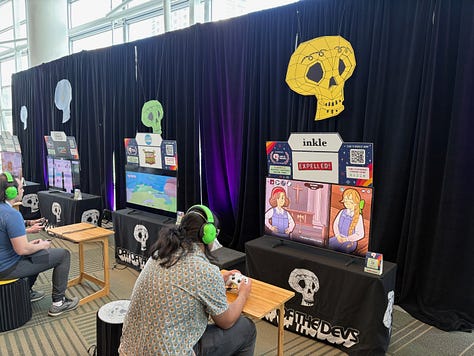
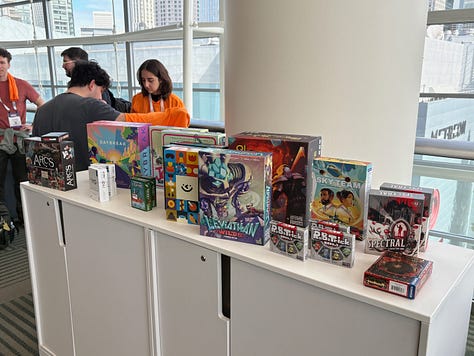
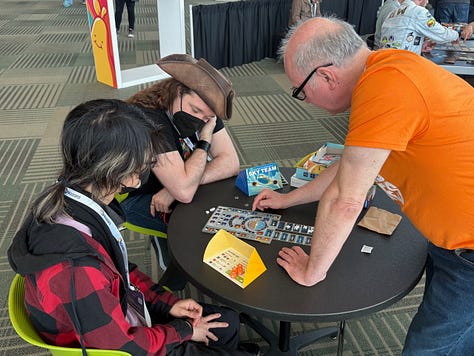
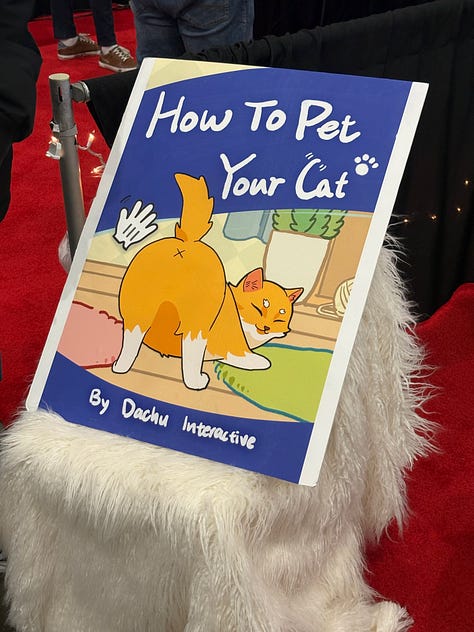
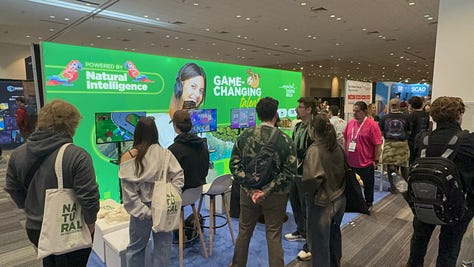

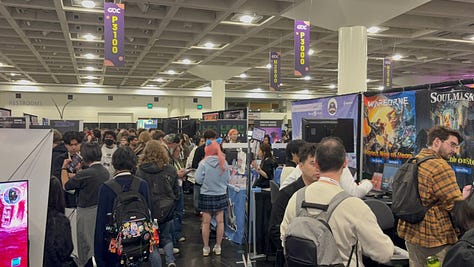
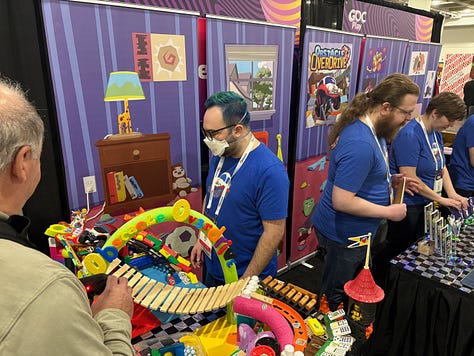
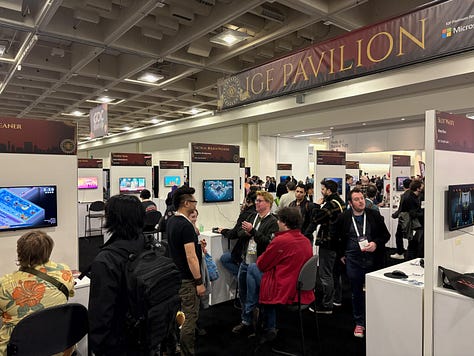
I love going to GDC for many reasons.
The panels are always informative and enlightening.
You can try out tons of fun current and upcoming indies—like at the Day of the Devs pavilion this year.
The expo always blows me away—the alt.ctrl section, in particular, never fails to surprise and delight with all the innovative input mechanisms on display. The highlight this year, by a country mile, was the use of a stuffed cat’s butt as a controller. No, I’m not kidding! Behold:
But the main reason I keep coming back, is because it’s a great way to take the pulse of the industry, and see where it might be going in the near future. That said, I do caution against reading the tea leaves too much based solely on what one sees at the conference.
For instance, back in 2022, Web3 was nigh omnipresent at the conference. More panels than I could count were about how the blockchain was going to revolutionize gaming, and Web3 exhibitors dominated the expo. This was also reflected in the press releases I got sent in the weeks and months leading up to the conference, which broke down as follows:
NFTs
NFTs
NFTs
Crypto
NFTs
NFTs
Blockchain
NFTs
NFTs
An actual game being released [Maybe]
[Rinse and Repeat, ad infinitum]
Just going off of the conference that year, you’d be forgiven for coming to the conclusion that crypto, NFTs, and other blockchain technologies were going to revolutionize gaming.
Obviously, that didn’t happen. In fact, the opposite happened: gamers revolted against NFTs and crypto so hard that the industry was forced to shelve their plans for Web3 games, retreating to the blockchain with their tails between their legs.1
Now, I’m not here to litigate whether or not NFTs were a good idea. Rather, my point is that it’s easy to get trapped in a bubble here. The industry and the players that ultimately consume its products seem increasingly at odds with each other—whether over actually consequential matters or pointless distractions—and people in the industry ignore player feedback and sentiment at their own peril.
Which brings me to the actual “next big thing” that was all over this year’s GDC: I’m talking, of course, about Artificial Intelligence (AI).
AI: Art or Artifice?
AI didn’t have as big of a footprint this year as NFTs did a few years back, but it nevertheless maintained a commanding presence at the conference. It was everywhere on the expo floor, and a big chunk of the panels centered around the technology. Even on non-related panels, at least one attendee would ask an AI-related question.
And when I say AI was everywhere on the expo floor, I do mean everywhere. Here’s a list of the AI-related exhibitors I spoke to this year—and the list is far from exhaustive:
Convai (AI Characters)
Genmotion (AI Animation)
Avatar SDK (AI Avatars from Selfies)
Facegood (AI Motion Capture)
Movin (AI Motion Capture)
Craftstory (AI “Actors”)
Rodin (AI 3D Asset Generation)
Meshy (AI 3D Models)
Anything World (AI Animation)
And that’s not even counting the huge corporate sponsors who are also pushing AI, such as Microsoft, Google, and Meta.
I’ll be covering AI in great detail for a future article in Game & Word Volume 5. But I did want to dedicate some space here to provide some thoughts and predictions on what the future may hold for this technology in the gaming space.
So, obviously, the exhibitors were really hyped and psyched for AI, but what did the attendees think of it all?
Well, it really depends on who you ask.
Engineers and producers, as a whole, seem intrigued, if somewhat ambivalent. Writers and artists, on the other hand, seem almost uniformly against it.
And it makes sense. The promise of AI is deeply compelling to overworked engineers crunching 100-hour weeks over the past six months, as well as to company heads desperate to cut costs at beleaguered game studios (particularly Western studios, but I’m getting ahead of myself here).
But the technology is expensive, unproven, and unreliable. Generative AI, particularly the Large Language Models (LLMs) that drive the current AI boom, are notoriously prone to “hallucinate” (in other words, “make stuff up”). And while their coding prowess is impressive, they’re a long way from being able to replace even mildly proficient software engineers.2
Meanwhile, on the creative side, the ambivalence towards generative AI has metastasized into palpable rage. And I get it—creative workers are probably the most currently exposed to and threatened by Generative AI, which as a writer I intrinsically understand. The environmental impact of AI also tends to rub strongly progressive-minded creatives the wrong way.
I don’t think LLMs will replace human writers, especially the good ones, anytime soon (I won’t rehash why here, though you can parse my reasoning in the archives). But the anger—from having your work basically used to train your possible replacement, as well as the tech’s steep environmental cost—is valid. And on the artist’s side, image generation is already taking away work and opportunities.
But what about the players? The games industry has been far slower to adopt AI than NFTs, but if and when the technology does become widely used in game development, how will the players respond?
Here, the limits of attending a conference like GDC become apparent since this is an event for developers, not players. But the players ultimately decide the direction of the industry—they supply the demand, and therefore the money, that fuels the products developers work so hard to create.
And as I mentioned, the industry can be a bit of a bubble, to the point of tuning out player preferences entirely—as evidenced by big publishers’ relentless pushing of NFTs despite vocal, passionate, and sustained opposition from players. And remember: developers ignore the players—their customers—at their peril (again, see what happened with NFTs).
At the moment, a definitive answer is likely to elude us. Players don’t seem to feel that strongly about AI, one way or another. They, like the public at large, do express frustration at having to wade through a sea of AI-generated “slop” when browsing the web and social media. But they don’t seem as viscerally opposed to AI as they were to NFTs. And until a mostly AI-generated game is published and marketed, we won’t know for sure.
That day still seems quite far away. Game developers, as I’ve mentioned, seem overall quite hesitant about adopting Generative AI, due to the technology’s aforementioned unreliability as well as creative staff’s vociferous opposition.
Nevertheless, I’d caution developers against getting too complacent. Already, there are indie studios working hard on games that use generative AI for artwork, animation, and NPC dialogue. And the day will come when a bold, enterprising, and/or reckless publisher brings a AAA-quality, AI-generated game to market. And the player response will tell us which way the winds will blow.
If players revolt, that could provide the excuse that studio heads need to shunt the technology aside, and the status quo will continue to reign unless the technology someday becomes reliable and cheap enough to compel its adoption.3
(Unlike with NFTs, I don’t currently foresee a situation unfolding where developers and players are diametrically opposed to each other on AI. Though I’d encourage you to take this prediction (like any other) with a grain of salt.)
But if players don’t care? Uh oh.
If that’s the case, then developers that use AI will quickly out-compete developers that don’t. And if those developers are, say, enterprising Eastern studios that don’t have as many hang-ups (however well-founded they may be) about using AI as Western studios, they could well accelerate a massive re-alignment that’s already playing out in the industry, which was on full display at GDC this year.
Which brings me to…
Year of the Dragon4
A lot of reporting and commentary from the gaming press has noted the somber mood at GDC this year. This confused me at first, as it wasn’t the overall vibe I got—my overall impression was one of buzzing, if not quite exuberant, energy.
I tried to figure out where this discrepancy was coming from. I wasn’t able to attend last year, so I didn’t have that baseline to compare it to (although I did notice attendance was noticeably down compared to a few years ago). And due to my balancing my attendance at GDC with raising a newborn at home, plus commuting two hours each way, meant I was only able to attend for a few hours at a time, during the daytime. This also precluded me from attending any after-hours events, where most of the real networking actually takes place.
But then I realized what was going on. Most of the commentators I read, as it turned out, were mainly speaking to Western developers. I, on the other hand, had mostly spoken with Eastern developers.
The moment I realized this, it all clicked.
The Western video game industry is, indeed, in a pitiful state. Storied studios and publishers like EA and Ubisoft have instituted wave after wave of layoffs, following the release of one commercial flop or dud after another. The rise of AI looms large over the workforce, as does the current political situation in the US and abroad. The industry remains as creatively vibrant as always, especially in the indie space. But the economics ain’t pretty, and it’s been especially rough for AAA publishers.
But the video game industry spans far beyond the West!
And if you look to the Far East, you realize that the video game industry isn’t all doom and gloom. Asian studios, as a whole—and Chinese studios in particular—are positively thriving, releasing hit after hit, going on hiring sprees, and dominating sales charts and awards lists alike.
This was reflected at the conference, which boasted a noticeably larger cohort of East Asian developers—attendees and panelists alike—than any other year I’ve attended (which is limited to within the past four years, but still). Japan and South Korea had a healthy presence, but China was the main star of the show.
The expo, especially, saw several Chinese exhibitors, service providers, and studios—which included plenty of indie developers, as well as a huge booth manned by Chinese mega-publisher Tencent.
And is it any surprise, really? Just look at how many bonafide AAA hits have come out of mainland China in the past year alone: Marvel Rivals, Black Myth: Wukong, and Infinity Nikki, for starters. And that’s to say nothing of Genshin Impact, Honkai: Star Rail, and the wider Hoyoverse before them.
All of these are truly stellar games that have sold like gangbusters and garnered immense critical acclaim (even if somewhat begrudgingly, as in the case of Black Myth: Wukong).
Chinese developers, in short, are absolutely killing it.
And let’s not forget Japan, which has been a keystone and vital engine of the gaming industry ever since Nintendo singlehandedly brought video games back from the dead after Atari crashed in 1983. Although Japanese dominance in gaming has ebbed and flowed since then, Japan has always been one of gaming’s biggest markets, Japanese publishers like Capcom, Square Enix, SEGA, and Nintendo (to say nothing of Sony’s PlayStation) have remained key players throughout the decades, and gaming communities have long held a deep reverence for Japanese media and culture.
Video games and Japan have always been joined at the hips. They probably always will be.
And Japanese companies have also been cooking. Capcom’s Monster Hunter: Wilds, released shortly before the conference, is already one of the most-played games of all time on Steam. Astrobot, Sony’s love letter to its iconic PlayStation console, swept the Game Awards this past December. FromSoftware continues to rule the fantasy genre with Elden Ring’s recently-released DLC, Shadow of the Erdtree. And the console gaming world waits with bated anticipation for Nintendo’s eagerly-awaited Switch 2 console, finally unveiled in January after years of frenzied speculation.
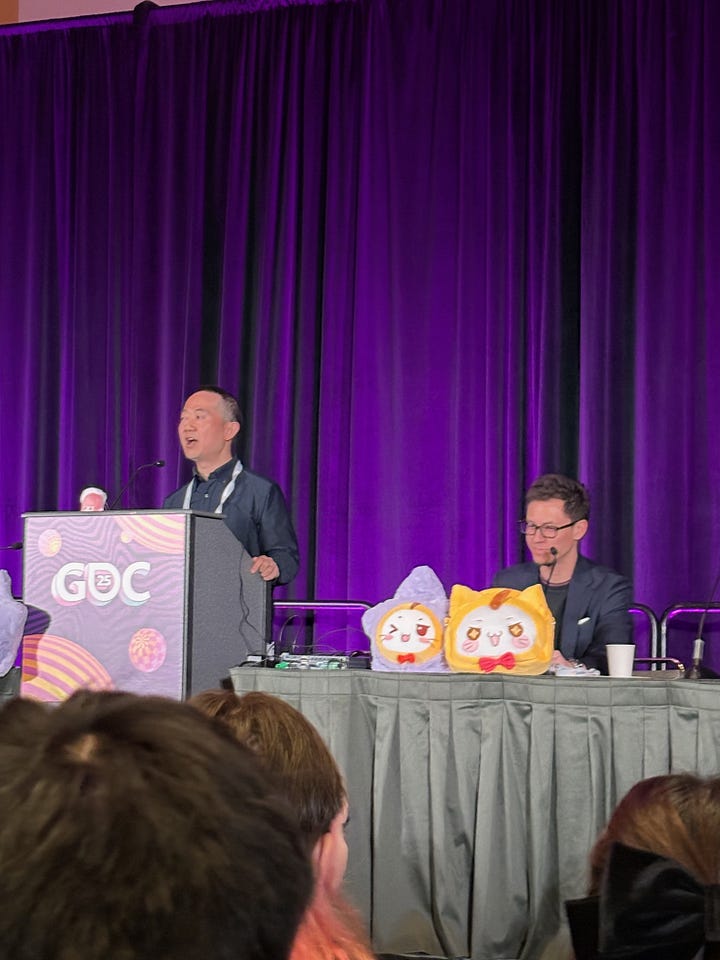
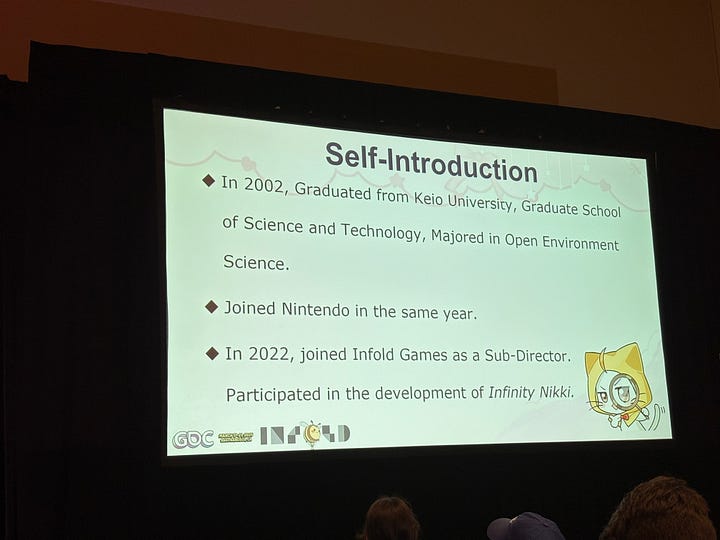
Japanese developers have also been lending their expertise to studios throughout the region. This year, nothing was more illustrative of this than Kentaro Tominaga, a longtime senior game director at Nintendo who worked on several Legend of Zelda titles, giving a talk on his experience working at Shanghai studio Infold Games to craft Infinity Nikki (which I will absolutely be dedicating a full article to—go play it now, it’s amazing and it’s free).
I even got him to autograph my Breath of the Wild game case:
Korean developers are also getting in on the fun. South Korea has long nurtured a fanatical gaming community and served as a nexus for e-sports, to the point that nothing instills more fear in a competitive FPS or RTS player than being matched against an opponent with a Korean username.
But now, Koreans are becoming known not just for playing games well, but also for making them well. Recent Korean releases like First Bursker: Kazan and inZOI are already shooting to the top of the Steam charts, following in the footsteps of hits like Stellar Blade. Each of these games are increasing Korean studios’ footprint in the global gaming sphere.
And in the case of inZOI—an open-world life simulator that’s mind-bogglingly staggering in its scale—we even see flashes of where the industry might be headed with AI: the developers are allowing players to customize assets and textures using text-to-image generative AI.
(As I said earlier… uh oh.)
This, of course, leads to the obvious question: why are Eastern developers flourishing, while Western developers are floundering?
Fully answering that question would take much more time and space than this recap warrants, and I’ll explore it in a future article. But the gist of it is that players just seem to resonate more with games from Asia than games from the West.
As far as what, exactly, seems to be clicking with players? It’s most certainly a multifaceted answer, involving factors as varied as game design, marketing, and simple timing, along with more structural reasons like bloat, failing business models, and regional economics.5
There’s a cyclical component at play, too—remember, Japan was the undisputed ruler of the gaming industry throughout the 80s and 90s before Western games seized the throne at the turn of the millennium. Asia’s current re-ascendancy may ultimately be, at least to some extent, a matter of the Wheel of Fortune continuing to turn.
But not all is lost for Western developers. In fact, the real value of events like GDC comes in providing the space and facilitating the conversations that allow for the exchange of data, new ideas, and best practices.
The question is: are they listening? Are they even talking to their Eastern colleagues? Those recent comments from my fellow Western gaming journalists don’t exactly constitute an encouraging sign.
Certainly, if I were a Western developer, I’d be playing as many Eastern games as I could while taking lots of careful, detailed notes.
In any case, time will tell how this all plays out. I’ll update y’all based on what I observe at next year’s conference.
Bonus Audio Content!
Well, that’s it for my initial observations… but wait! There’s MORE!
I’m also cooking up some very spicy bonus content for you guys. I attended a talk by a lewd game developer, a really cool and funny dude who provided quite the informative picture of this (ahem) racier side of game development.
I was able to sit down with him afterward for a deep dive into one of game development’s seedy back alleys, which turned out to be not quite as seedy as you’d think—albeit still somewhat shunned and shrouded in mystery.
So, join me as I sit down with Hot Pink Studios and lift the veil surrounding the adult games industry in a special episode of the Game & Word Podcast, which I’ll publish within the next few weeks.
Due to the subject matter, this episode will be paywalled, so make sure you sign up for a paid subscription to Game & Word so you don’t miss out. It’s only $5 per month, and you’ll get to tune in while supporting a fully independent games publication:
And that’s a wrap for this recap! Thank you to Informa and the GDC press office for inviting me back this year, as well as (as always) for all your help and support. It was great to be back at the Moscone Center, and I look forward to returning next year to see how the industry has adapted to the technological and cultural changes I oberved and recorded here.
In the meantime, thank you, dear reader, for reading Game & Word. If you’re new, stick around! We’ll now return to our regularly scheduled deep gaming analysis.
While you’re waiting, do stop by the comments section and drop me a line! Were you also at GDC? If so, what were your takeaways? If not, what else would you like to know? I always enjoy hearing from my readers, so don’t be a stranger!
The then-imminent crypto collapse, including the spectacular implosion of FTX and the conviction of its founder Sam Bankman-Fried for fraud, certainly didn’t help either.
I should know, by the way. I’ve worked fairly deeply with AI and am quite familiar with its strengths and limitations. And as a non-coder, the promise of being able to make an entire game without writing a line of code deeply resonates with me. But while the technology is undeniably impressive, the hallucination issue is a stubborn sticking point, and one I don’t foresee being solved in the current crop of LLMs.
Assuming it does, that is. Although AI is advancing at a dizzying pace, there are many physical bottlenecks that could well slam the brakes on improvements. Energy (ie, available electrical power), compute, and training data (which is starting to run out) are the ones to keep an eye on.
Yes, I know it’s not the Year of the Dragon anymore. But last year was, and the game releases I’m covering here were released then. And the Lunar New Year was barely a month before the conference, so in my view, what I saw was the culmination of the Asian market’s growth and performance over this past Year of the Dragon. So, the section name still applies. Give me a break, geez.
For instance, a big reason Chinese studios have been able to pump out one massive open-world AAA game after another is that it costs much less to hire hundreds of Chinese developers than hundreds of Western developers (and there are much more of them).


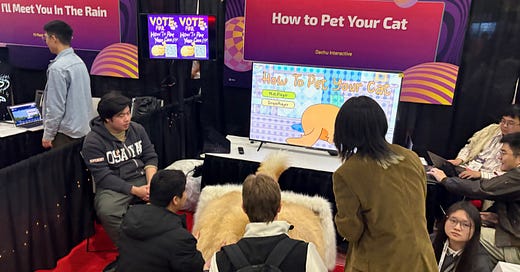


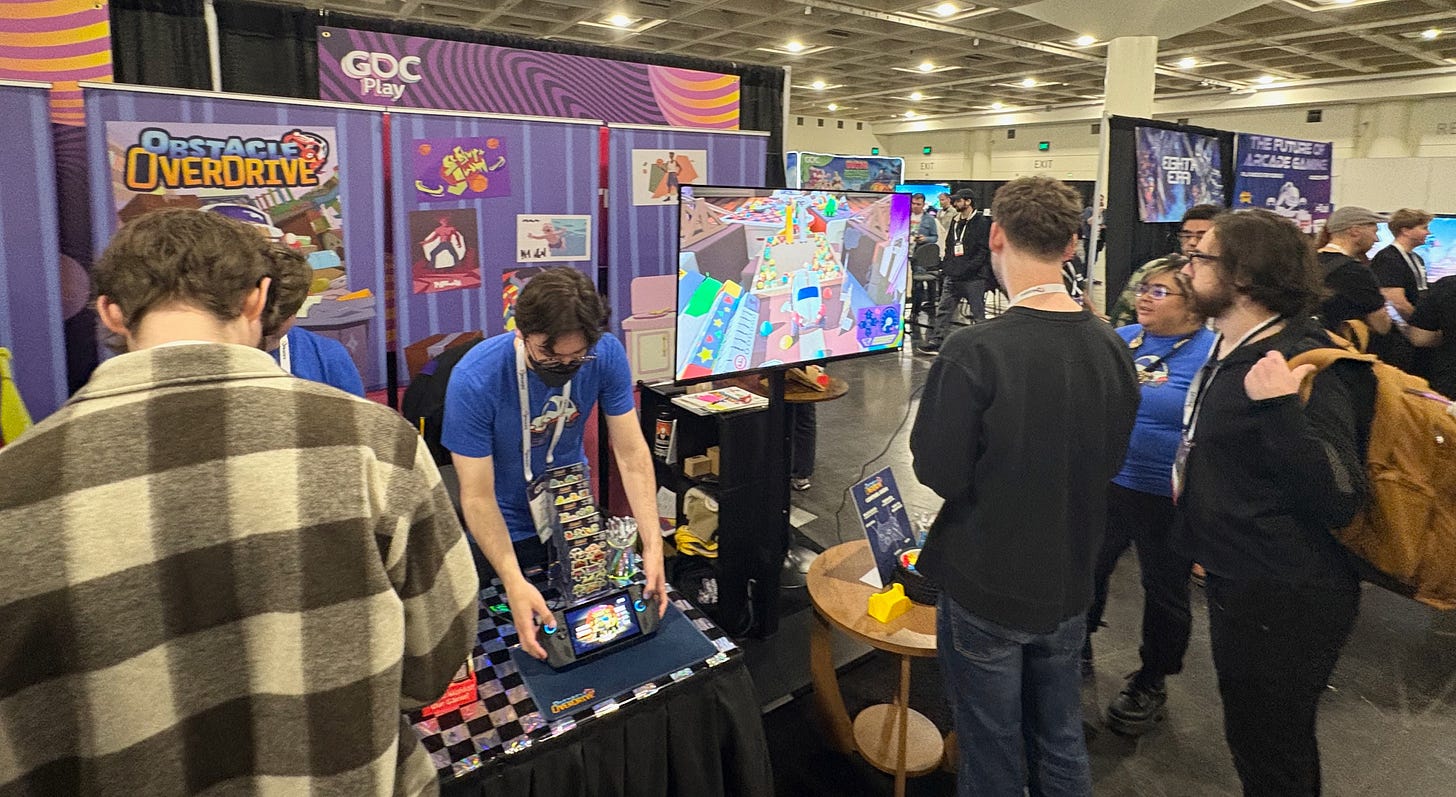

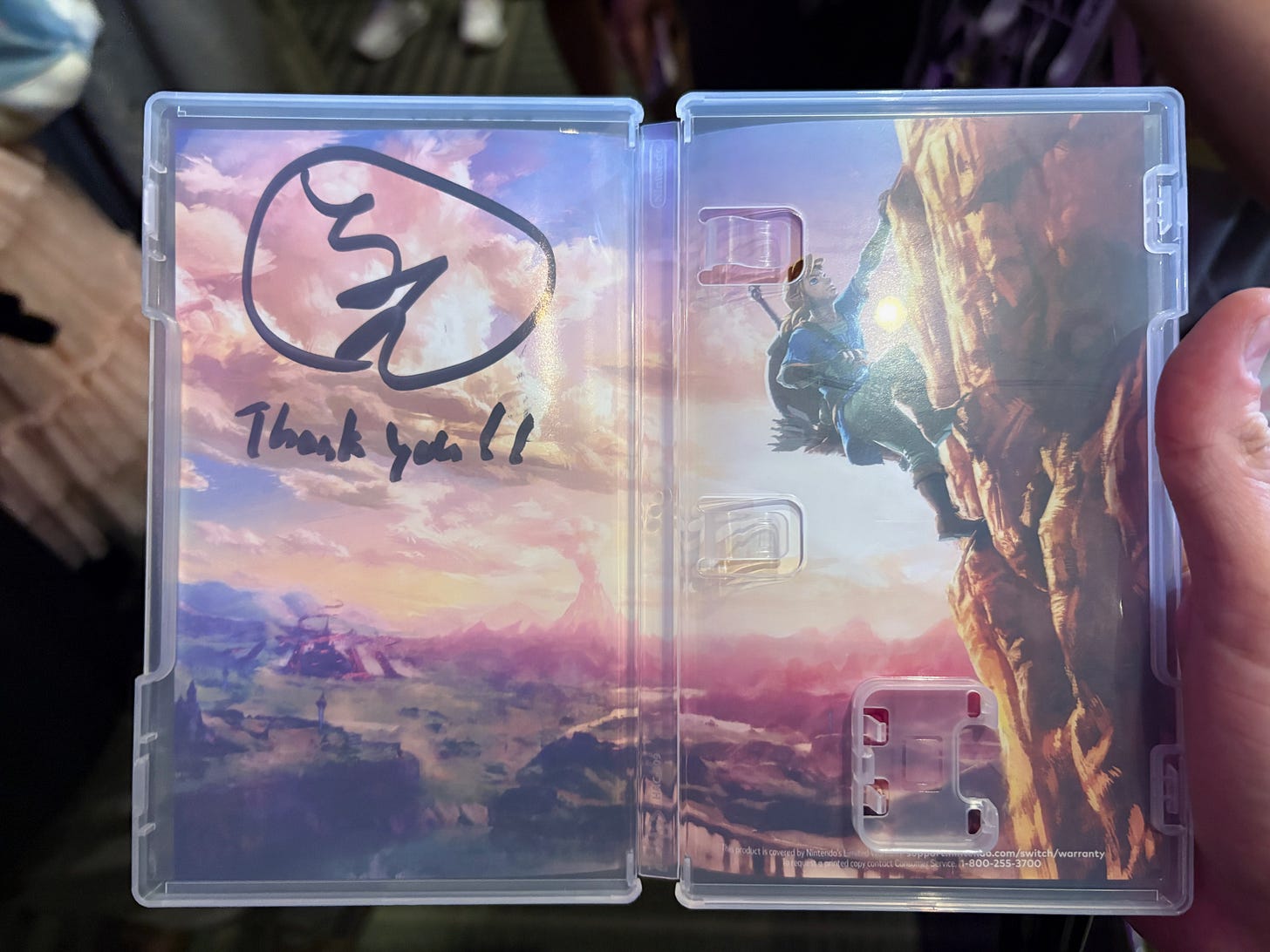
Sounds like you had a great GDC! Mine was a blast. I, too, played the cat butt and many other inspiring indies. In terms of Western game development news, the biggest story to me was the formation of the UVW union, which I joined at the show! Their members marched in the hallways. I hope UVW leads to a more equitable industry.
Thank you for the great glimpse into the conference! That autograph is 🤩